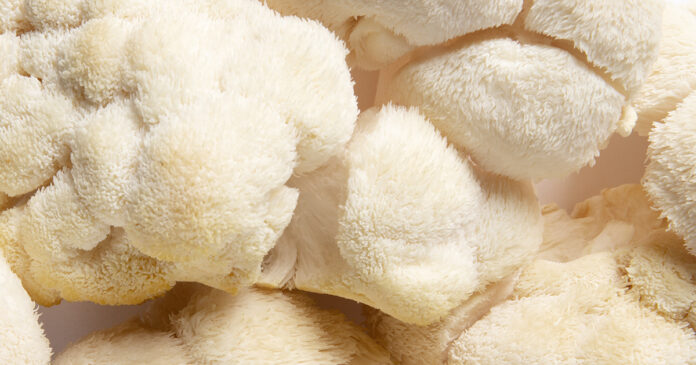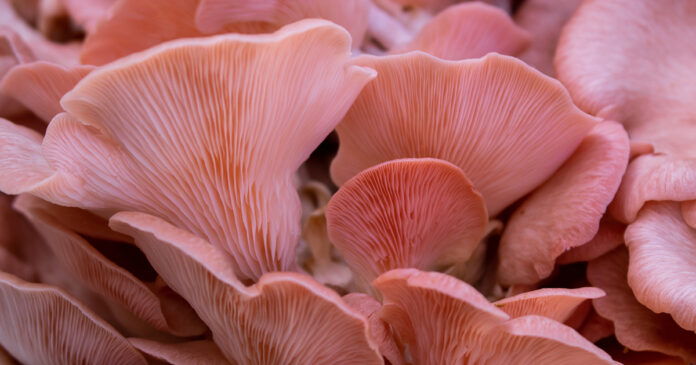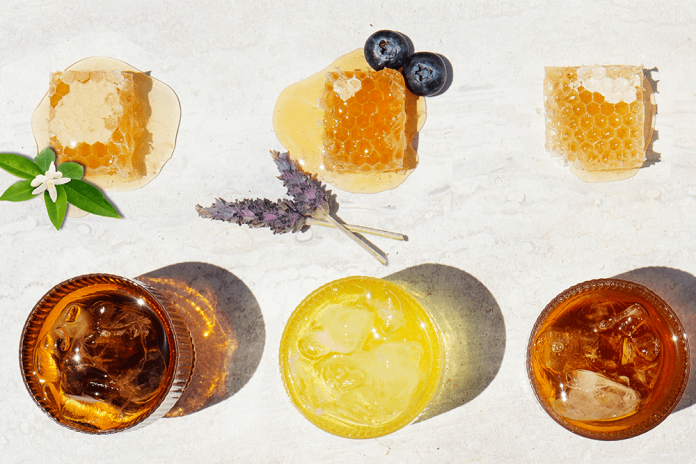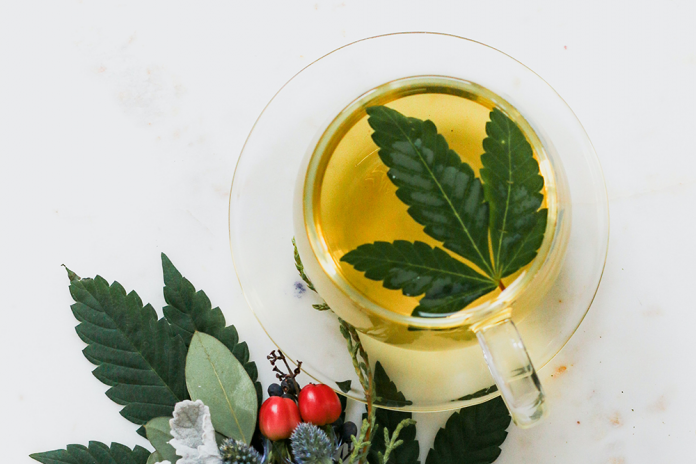You’ve probably seen photos of bubble tea – also called boba tea – even if you’ve never tried it. The colorful, creamy drink dotted with its signature tapioca balls makes for an Insta-worthy beverage. But the name doesn’t give much away. Whether you’re wondering what exactly bubble tea is, or you’re already a fan but are looking for a way to recreate this fun drink at home, you’re in the right place.
What is Bubble Tea (or Boba Tea)?
Bubble tea originated in Taiwan in the 1980s. The story goes that a stall owner invented the drink one hot summer afternoon by combining three favorite treats — tapioca balls, shaved ice and milk tea. [1] Despite its Asian origin, this “pearl milk tea” has become a fast favorite in the United States!
The traditional base of bubble tea is strong black or green iced tea sweetened with whole milk and several tablespoons of sugar, honey, or simple syrup.
The “bubbles” are balls of tapioca, more often referred to as black tapioca pearls. Tapioca pearls are made from starch derived from the cassava root and are pure carbohydrate. They don’t contribute much flavor, but their starchiness gives them a chewy texture that punctuates the smooth and creamy tea. Topped with plenty of ice and milk tea, the combo makes for refreshing, fun, and indulgent summer tea drinks.
Over time, bubble tea makers have gotten creative by using different types of milk and tea, flavored sugar syrups, and flavored tapioca balls. Some focus on building up unique flavors and omit tea altogether, though these versions tend to be higher in sugar and more difficult to make.
Why Make Your Own Boba Tea?
Bubble tea rapidly gained popularity and made its way into shops around the world. The downside of purchasing bubble tea in a cafe is that these drinks can quickly become calorific bombs of fat and sugar.
The current Dietary Guidelines for Americans recommend that added sugars should make up no more than 10% of total daily calories. The American Heart Association thinks even that is too generous and says no more than 100 calories per day for women or 150 calories per day for men should come from added sugars. This equates to about 5% of total daily calories. [2][3]
Consuming foods with added sugars can make it easy to eat more total calories than we need, without any additional nutritional benefit from fiber, vitamins, or minerals. Excessive calorie intake may eventually decrease the body’s insulin sensitivity, meaning it becomes less efficient at taking sugar out of our bloodstreams and into our cells where it can be converted to energy. Consistently high blood sugar levels have been linked with increased risk for cardiovascular disease, diabetes, obesity, and other metabolic disorders. [4][5][6]
The occasional treat, of course, is nothing to worry about. One cup of boba isn’t going to cause long-term damage. Regardless, it’s important to make informed decisions around your food choices. Knowing what’s going in your body is always a good idea, and making food at home is a surefire way to keep control over ingredients and portion size.
Luckily, homemade bubble tea is not difficult to make.
How to Make Boba Tea
Boba tea consists of four basic components: tea, sweetener, tapioca, and milk. Generally, each serving is made up of a cup of tea, a quarter-cup of tapioca pearls, a few tablespoons of your sweetener of choice, and a splash of milk, all served in a tall glass of ice cubes. We’ll break it down by each component.
The Tea
Choose a strong black or green tea for your tea base. English breakfast black tea or Jasmine green tea are excellent options.
This sticks to the traditional Taiwanese flavor profile and brings a dose of antioxidants to your beverage. Though the antioxidant profile varies by type of tea, all varieties contain these polyphenol powerhouses that have been shown to aid weight management and reduce the risk for a number of diseases when included as part of a balanced diet. [7][8][9]
If using loose-leaf or bagged tea, it’s recommended to double the amount of tea per cup of water in order to intensify the tea flavor, because it will be watered down by milk, sweeteners, and ice. So if you want to make a 6-cup pitcher of iced tea, use 10 to 12 tea bags or tablespoons of loose leaf tea.
Tea crystals are another great option. Because they dissolve almost instantly in hot water, they save time without sacrificing any antioxidant activity.
Make and refrigerate your tea ahead of time to ensure it is fully cooled before use.
The Sweetener
It’s best to add your sweetener to your hot tea while it steeps to ensure it dissolves completely and the flavors integrate fully.
To keep the sugar content in check, opt for natural, non-nutritive sweeteners like stevia or monk fruit extract, which are 100 to 300 times sweeter than white sugar but contain zero calories. [10]
And unlike other artificial sweeteners like aspartame and sucralose, these natural products are not associated with potentially negative health effects. [11]
Interested in boba milk tea with fruit flavors? Pureed fruit is another option, adding not just sweetness but also additional flavor, vitamins and minerals, fiber, and vibrant color. This version is a bit more like a smoothie.
To fully incorporate your fresh fruit and ensure a smooth and even consistency, blend it along with your cooled tea and milk. Any fruit will work, but two popular choices are mango and banana, as their meatier texture tends to blend up more easily and produce a smoother drink.
If you go this route, use about ¼ cup to a ½ cup of fruit per serving of tea.
The Tapioca
The next step is to prepare the tapioca pearls — likely the only ingredient you may not have sitting in your pantry. Fortunately, these tiny parcels of tapioca starch can be found in some grocery stores and are easy to find online.
Though there are quick-cook boba pearls available, most varieties take at least 30 minutes to prepare. Pour only the amount of tapioca you plan to use into a pot of boiling water.
Cover and cook on high heat for about 15 minutes. Then turn off the heat and let the pearls continue cooking in the liquid for another 15 minutes. Only drain them when you’re ready to use them, as the pearls can stiffen up quickly once cooled and become inedible. For that reason, this is one component you don’t want to prepare ahead of time in batches.
Some bubble tea makers add sugar to the cooking liquid or coat the finished tapioca in sugar syrup, but to make a healthier drink, it’s best to leave the pearls plain.
Many recipes call for a quarter-cup of tapioca pearls per serving of tea, which adds roughly 135 calories and 35 grams of carbohydrates. Use less tapioca to reduce the calorie count, or opt for lower-calorie milk instead if you really love those chewy surprises. [12]
The Milk
Experimenting with different kinds of milk is another opportunity to play with your tea’s taste, texture, and nutritional profile. If you’re lactose-intolerant, vegan or simply looking to cut back on dairy, opt for a plant-based milk.
Many plant-based milks contain fewer calories per serving than their dairy counterparts. A cup of whole milk contains 140 calories and 4.5 g of saturated fat per cup.
By comparison, a cup of soy milk contains about 60 calories per cup; almond milk contains 40, and cashew milk only 25. Oat milk clocks in at 130 calories per cup, but importantly, none of these contain any saturated fat. Most are also fortified with calcium and naturally contain other vitamins and minerals like riboflavin and folate.
Whichever you choose, make sure it is unsweetened. Check the nutrition facts label and ingredients list to verify that no extra sugar has been added.
Healthy Brown Sugar Boba Recipe
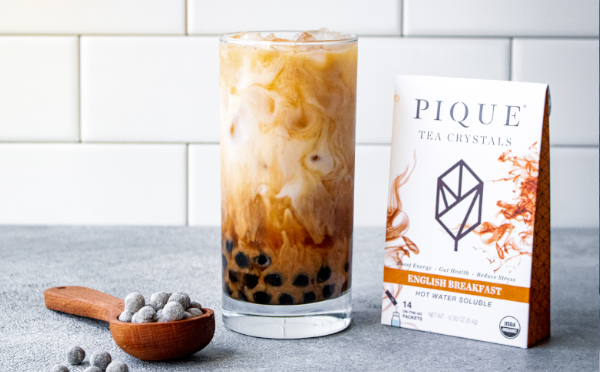
Ingredients
- 1/4 cup boba tapioca pearls
- 4 cups water
- 1/2 cup hot water
- 2 tsp coconut sugar
- 1 sachet Pique English Breakfast tea
- 1/2 cup unsweetened coconut milk
- Ice
Instructions
- Bring 4 cups of water to a boil in a saucepan. Add tapioca pearls and stir. Turn heat off and cover. Cook pearls for 5-7 minutes, until they float to the top and are tender. Drain pearls and run under cold water. Transfer to a glass.
- Stir together 1/2 cup of hot water, tea crystals, and coconut sugar. Add a couple of ice cubes to chill the tea.
- Add ice to glass with boba pearls and pour in tea/coconut sugar mixture. Top with coconut milk and stir to combine. Enjoy!
Final Takeaway
Bubble tea is a fun, tasty, and refreshing twist on a traditional beverage, but can pack in lots of calories, sugar, and fat. Plus, you might not have any bubble tea shops in your area! Make your own at home, complete with chewy tapioca balls, to create a lighter, healthier drink that lets its tea flavor shine.
Pro tip: get your hands on some extra-wide straws!


